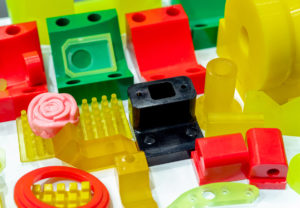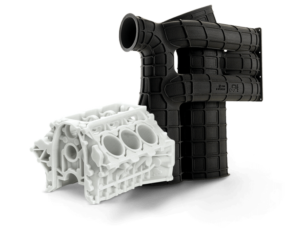As discussed in What Is Injection Molding, parts created for injection molding must be designed carefully to facilitate the molding process. The material used for the part, the part’s desired shape and features, the mold material, and the properties of the molding machine must all be considered during the design phase.
Design facilitates the versatility of the injection molding process by considering the designs and its possibilities, including its ultimate purpose, its material, and the mold.
Basic Design Guidelines for Injection Molding
-

Material considerations: Choose material that meets the functional requirements of the part and have good processing characteristics. Also consider the material’s availability [i.e., in stock or short lead time and MOQ (minimum order quantity)] is low.
- Wall thickness: The part wall thickness should be as uniform as possible. Uneven wall thickness causes uneven flow, leading to molding defects. Also, keep the wall thickness within “recommended wall thickness” for the resin used to create the part.
- Include Ribs: A plastic part that has been designed within the recommended range may not be strong enough to support itself/ functional requirements; ribs are added to reinforce the part.
- Rib/Wall Thickness Ratio: Always maintain recommended rib-to-wall thickness ratio so that the thickness at the rib area is not excessive (this can cause sink). Typically, the rib needs to be 0.6 times the wall thickness. Also ensure you have the radius at the junction of the rib/wall to eliminate stress and facilitate flow.
- Draft: Draft is the taper amount for the vertical walls of the plastic part. Without draft, the part may not eject properly or may sustain damage during ejection. Typically, 1 degree draft is recommended; textured surfaces may need more draft depending on texture depth.
- Adjust Part Design to eliminate a complex parting line, reduce side actions that are required to release under-cut features from the mold, and eliminate features that require thin steel areas in the mold.
- Radius: Add radius on all the sharp corners, as these can generate stress.
- Over-Tolerancing: The injection molding process has limitations. Be aware of the process limitations when specifying the dimensional and geometry tolerance. Refer SPI standards, guidelines for tolerance, based on the part’s material and size.
If you’re looking for a partner in additive or traditional manufacturing, check out our capabilities today. We can help keep your projects moving forward – begin a quote now or contact an expert.


